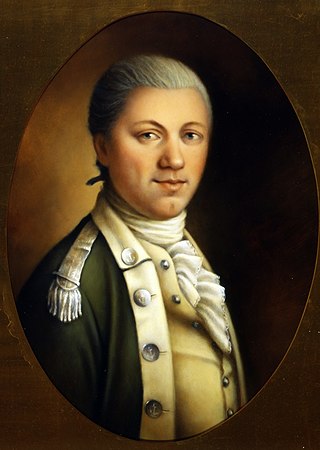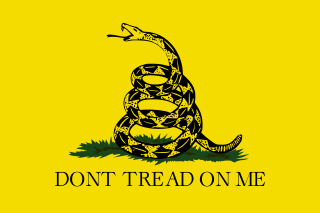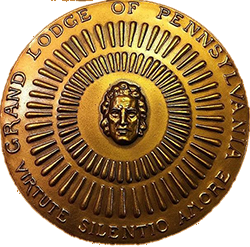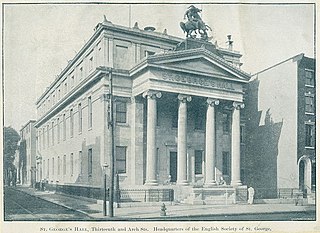
Samuel Nicholas was an American marine and officer who was the first officer commissioned in the United States Continental Marines and by tradition is considered to be the first Commandant of the Marine Corps.

The Continental Marines were the amphibious infantry of the American Colonies during the American Revolutionary War. The Corps was formed by the Continental Congress on November 10, 1775 and was disbanded in 1783. Their mission was multi-purpose, but their most important duty was to serve as onboard security forces, protecting the captain of a ship and his officers. During naval engagements, in addition to manning the cannons along with the crew of the ship, Marine sharpshooters were stationed in the fighting tops of a ship's masts specifically to shoot the opponent's officers, naval gunners, and helmsmen.

The Grand Lodge of Pennsylvania, officially The Right Worshipful Grand Lodge of the Most Ancient and Honorable Fraternity of Free and Accepted Masons of Pennsylvania and Masonic Jurisdictions Thereunto Belonging, sometimes referred to as Freemasons of Pennsylvania is the premier masonic organization in the Commonwealth of Pennsylvania. The Grand Lodge claims to be the oldest in the United States, and the third oldest in the world after England and Ireland, having been originally established as the Provincial Grand Lodge of Pennsylvania in 1731. This claim is disputed by both the Grand Lodge of Massachusetts and the Grand Lodge of Virginia.

Pennsylvania was the site of many key events associated with the American Revolution and American Revolutionary War. The city of Philadelphia, then capital of the Thirteen Colonies and the largest city in the colonies, was a gathering place for the Founding Fathers who discussed, debated, developed, and ultimately implemented many of the acts, including signing the Declaration of Independence, that inspired and launched the revolution and the quest for independence from the British Empire.

Carpenters' Hall is the official birthplace of the Commonwealth of Pennsylvania and a key meeting place in the early history of the United States. Carpenters' Hall is located in Independence National Historical Park in Philadelphia, Pennsylvania. Completed in 1775, the two-story brick meeting hall was built for and still privately owned by the Carpenters' Company of the City and County of Philadelphia, the country's oldest extant craft guild.

The history of the United States Marine Corps (USMC) begins with the founding of the Continental Marines on 10 November 1775 to conduct ship-to-ship fighting, provide shipboard security and discipline enforcement, and assist in landing forces. Its mission evolved with changing military doctrine and foreign policy of the United States. Owing to the availability of Marine forces at sea, the United States Marine Corps has served in nearly every conflict in United States history. It attained prominence when its theories and practice of amphibious warfare proved prescient, and ultimately formed a cornerstone of U.S. strategy in the Pacific Theater of World War II. By the early 20th century, the Marine Corps would become one of the dominant theorists and practitioners of amphibious warfare. Its ability to rapidly respond on short notice to expeditionary crises has made and continues to make it an important tool for U.S. foreign policy.
The National Gazette and Literary Register was a daily newspaper published in Philadelphia by William Fry from 1820 to 1841.
John T. Smith was an American banker and politician who served as a Democratic member of the U.S. House of Representatives for Pennsylvania's 3rd congressional district from 1843 to 1845.
Joseph Turner (1701–1783) was a seaman, merchant, iron manufacturer, and politician in Philadelphia, where he served during the colonial era when the city was the capital of the Province of Pennsylvania, and following American independence, when it was the new nation's capital and largest and most influential city.

The United States Marine Corps Birthday is an American holiday celebrated every year on 10 November with a traditional ball and cake-cutting ceremony. On that day in 1775, the Continental Marines were established.

Union Fire Company, sometimes called Franklin's Bucket Brigade, was a volunteer fire department formed in Philadelphia in 1736 with the assistance of Benjamin Franklin. It was the very first firefighting organization in Philadelphia, although it was followed within the year by establishment of the Fellowship Fire Company. The fire company was formed on 7 December 1736 after a series of publications in the Pennsylvania Gazette by Franklin and others pointing out the need for more effective handling of fires in Philadelphia and remained active until approximately 1820. Although modeled after the Mutual Fire Societies of Franklin's native Boston, the Union Fire Company protected all members of the community rather than only the members of the company.

Fort Beversreede was a Dutch-built palisaded factorij located near the confluence of the Schuylkill River and the Delaware River. It was an outpost of the colony of New Netherland, which was centered on its capital, New Amsterdam (Manhattan), on the North River.

Samuel Carpenter was a Deputy Governor of colonial Pennsylvania. He signed the historic document "The Declaration of Fealty, Christian Belief and Test" dated 10 September 1695; the original is in the Historical Society of Pennsylvania. Samuel was also called the "First Treasurer" of Pennsylvania, and was a partner and friend of proprietor William Penn.
The Friends' Almshouse of Philadelphia was founded in 1713 by the city's Quaker leadership to help destitute members of the Society of Friends, although people of other creeds were sometimes admitted. As such, this was the first institution in America to care for poor citizens. The combination poorhouse and workhouse occupied two small buildings built especially for it on the south side of Walnut Street between Third and Fourth Streets. The houses were augmented with a substantial brick building fronting Walnut Street in 1729.

The Society of the Sons of St. George, established at Philadelphia for the advice and assistance of Englishmen in distress, was founded in Philadelphia, Pennsylvania, on Saint George's Day, April 23, 1772. Earlier meetings were reportedly held at Tun Tavern.

The Philadelphia Evening Telegraph was a newspaper published in Philadelphia, Pennsylvania, from 1864 to 1918.
Samuel Howell was a Quaker who became a prominent merchant in colonial Philadelphia and a leading patriot, proponent, leader and financier for American independence.
Friends meeting houses are places of worship for the Religious Society of Friends, or Quakers. A "meeting" is the equivalent of a church congregation, and a "meeting house" is the equivalent of a church building.
Nathaniel Borradaile Browne (1819-1875) was an American lawyer, financier, and government official in Philadelphia, Pennsylvania.

The Alexander von Humboldt statue is a monumental statue of Alexander von Humboldt in Philadelphia, Pennsylvania, United States. Located in Fairmount Park, the statue was completed in 1871 and donated to the city in 1876.















